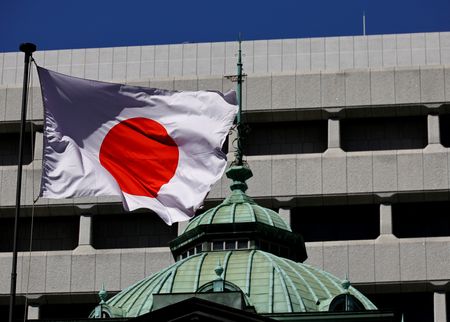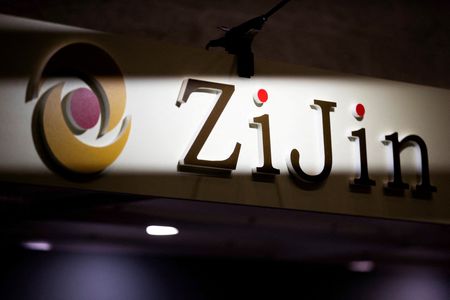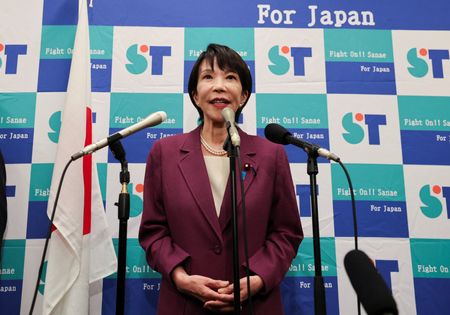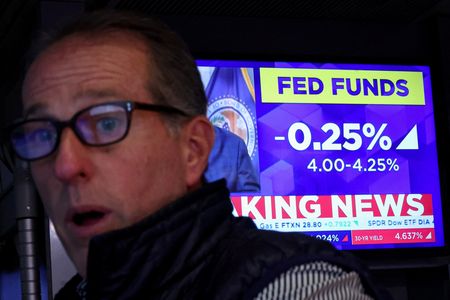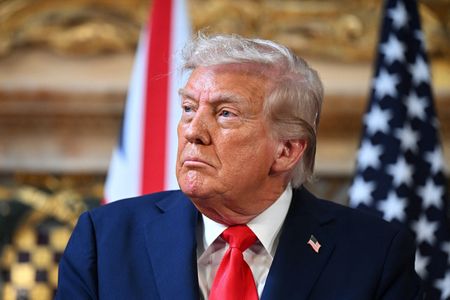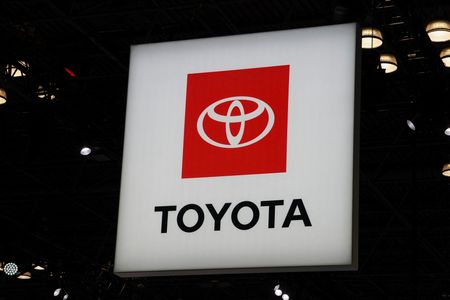By Leika Kihara
TOKYO (Reuters) -The Bank of Japan is expected to keep interest rates steady on Friday, as policymakers seek more clarity on whether the economy can withstand U.S. President Donald Trump’s tariffs and growing signs of weakness in the American economy.
The BOJ’s meeting comes in the wake of the U.S. Federal Reserve’s decision on Wednesday to cut interest rates and signal more reductions to halt any slide in an already weakening labour market.
A downturn in U.S. growth would cloud the BOJ’s rate-hike path by adding strains to Japan’s fragile recovery, which is starting to see exports hit by Trump’s tariffs.
Markets are focusing on Governor Kazuo Ueda’s post-meeting briefing for hints on how soon the BOJ could resume rate hikes, paused since January as policymakers gauge the tariff impact.
“We expect the BOJ to raise rates by early next year, but it is unclear whether officials will be able to make a decision this coming October,” said Kei Fujimoto, senior economist at SuMi TRUST.
“Policymakers will carefully assess the impact of tariffs on future corporate earnings and accordingly, whether companies are in a position to continue raising wages.”
At the two-day gathering concluding on Friday, the BOJ is widely expected to keep interest rates steady at 0.5%.
While the BOJ is not expected to make any major change to its forecast for a moderate recovery, Ueda is likely to warn of lingering uncertainty over the economic outlook, analysts say.
Political uncertainty further muddles the BOJ’s policy outlook, as the ruling party gears up for a leadership race on October 4 after Prime Minister Shigeru Ishiba’s decision earlier this month to step down.
A Reuters poll showed a majority of economists expect another 25-basis-point hike by year-end. But those surveyed are split on the timing with bets centering on October and January.
While global uncertainties give the BOJ good reason to go slow in rate hikes, stubbornly high food prices and a tight job market have led some hawkish members of its board to warn of the risk of keeping real borrowing costs negative for too long.
Japan’s consumer inflation remains above the BOJ’s 2% target for well over three years, with steady gains in rice and other food prices pushing up households’ cost of living.
“If upward inflation risks heighten, the BOJ may need to act decisively as a guardian of price stability,” hawkish board member Naoki Tamura told a news conference in late June.
The BOJ exited a massive, decade-long stimulus programme last year and raised short-term rates to 0.5% in January on the view Japan was on the cusp of sustainably achieving its 2% inflation target.
While Ueda has stressed the bank’s resolve to keep hiking rates, he has vowed to tread cautiously on uncertainty over the impact of U.S. tariffs on Japan’s economy.
(Reporting by Leika Kihara; Editing by Sam Holmes)

